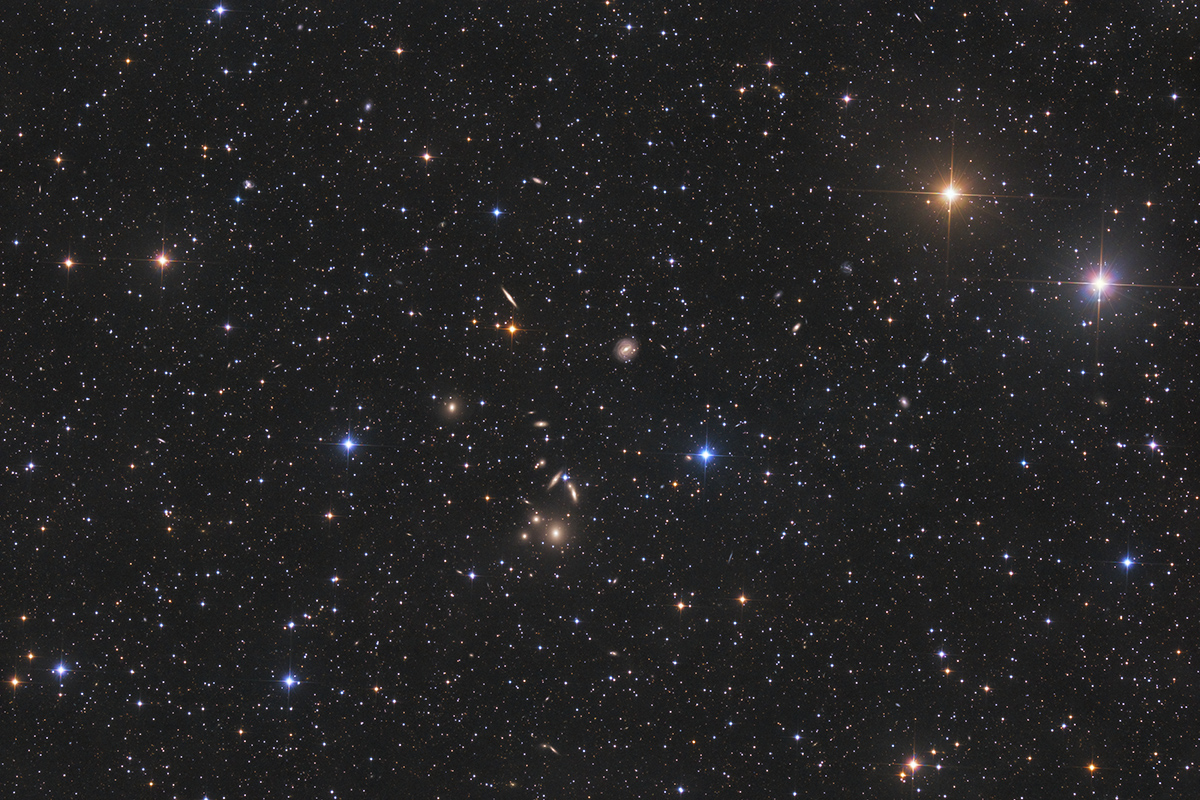
[back] NGC 7342 et al. in Pegasus
Higher resolved image / höher aufgelöstes Bild (5000 x 3335 Pixel)

|
(c) 2023 All astro photo images are copyrighted. They may not be used or reproduced without explicit written permission from the authors and Rainer Raupach. |
|
5' |
|
About this Image / Über dieses Bild
| CCD: | ZWO ASI094MC Pro |
| Image Type, Orientation: | RGB image, North is at 12:00h |
| Exposure time: | 32x300s, all 1x1 bin (2:40h total) |
| Exposure date: | November 15th and 19th 2022 |
| Location: | Capella Observatory at Skinakas, Crete/Greece, remote-controlled from Bad Arolsen/Germany |
| Filter: | RGB: Internal Bayer-Matrix |
| Instrument: | Ganymed 60cm-Hypergraph in primary focus (f=1815.9 mm) |
| Photographer: | Josef Pöpsel, Rainer Raupach, Frank Sackenheim, Stefan Binnewies |
| Remarks: |
Rainer Raupach processed the image. He is also responsible for
this
labeled version of the image above. NGC 7342
is a SBa-type barred spiral in Pegasus. At a distance of approx. 370 million
light years, it already shows a clearly recognizable red shift (~0.027). At
around 75,000 light-years across, its diameter is less than half that of our
Milky Way. Its discovery is attributed to Édouard Stephan (1872), but the
galaxy was already described by Truman Safford in 1866. But this observation
was not published for a long time. Johan Dreyer, as author of the New
General Catalogue, only became aware of this in the final stages of
preparing the NGC, so the earlier discovery is only mentioned in the
appendix. |
|
|
|
|
Bemerkungen: |
Die Bildbearbeitung übernahm Rainer Raupach. Er ist ebenfalls für diese beschriftete Version des Bildes oben verantwortlich.
NGC 7342 ist eine Balkenspirale vom Typ SBa im Pegasus. Bei einer Entfernung
von ca. 370 Mio.Lj weist sie schon eine deutlich erkennbare Rotverschiebung
(~0.027) auf. Ihr Durchmesser ist mit etwa 75000 Lichtjahren im Vergleich zu
unserer Milchstraße weniger als halb so groß. Ihre Entdeckung wird Édouard
Stephan (1872) zugeschrieben, allerdings wurde die Galaxie bereits 1866 von
Truman Safford beschrieben, diese Beobachtung jedoch lange nicht
veröffentlicht. Johan Dreyer, als Autor des New General Catalogue, wurde
erst in der letzten Phase der Erstellung des NGC darauf aufmerksam, so dass
die frühere Entdeckung nur im Anhang erwähnt wird. |
Back to the Galaxies' Overview / Zurück zur Galaxien-Übersichtsseite